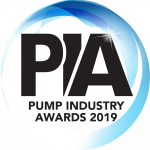Waste is increasingly being viewed as a resource. From well-established practices such as recycling paper and aluminium, to the development of the circular economy, an increasing volume of resources are now being recovered from materials that were previously seen only as inconvenient wastes. Matt Hale, International Sales and Marketing Director at HRS Heat Exchangers, looks at how value can be extracted from liquid waste streams and what to consider when choosing technology to achieve this.
Why recover waste?
Waste valorisation is the process of recovering value from waste materials, for example through reusing or recycling them, or by composting or anaerobically digesting them and converting them into more useful products such as materials, chemicals, fuels or other sources of energy. In a circular economy, compared to a linear one, the materials within products are reused, turning previously burdensome wastes into valuable resources.
The European Union has proposed to double its rate of resource productivity by 2030 and as part of this, adopted a communication, Towards a circular economy: a zero waste programme for Europe, in July 20141. Like key industrial stakeholders and businesses, it asserts that moving to a circular economy can have a positive effect on economic growth and strengthen the competitiveness of companies, in addition to providing a number of environmental benefits.






